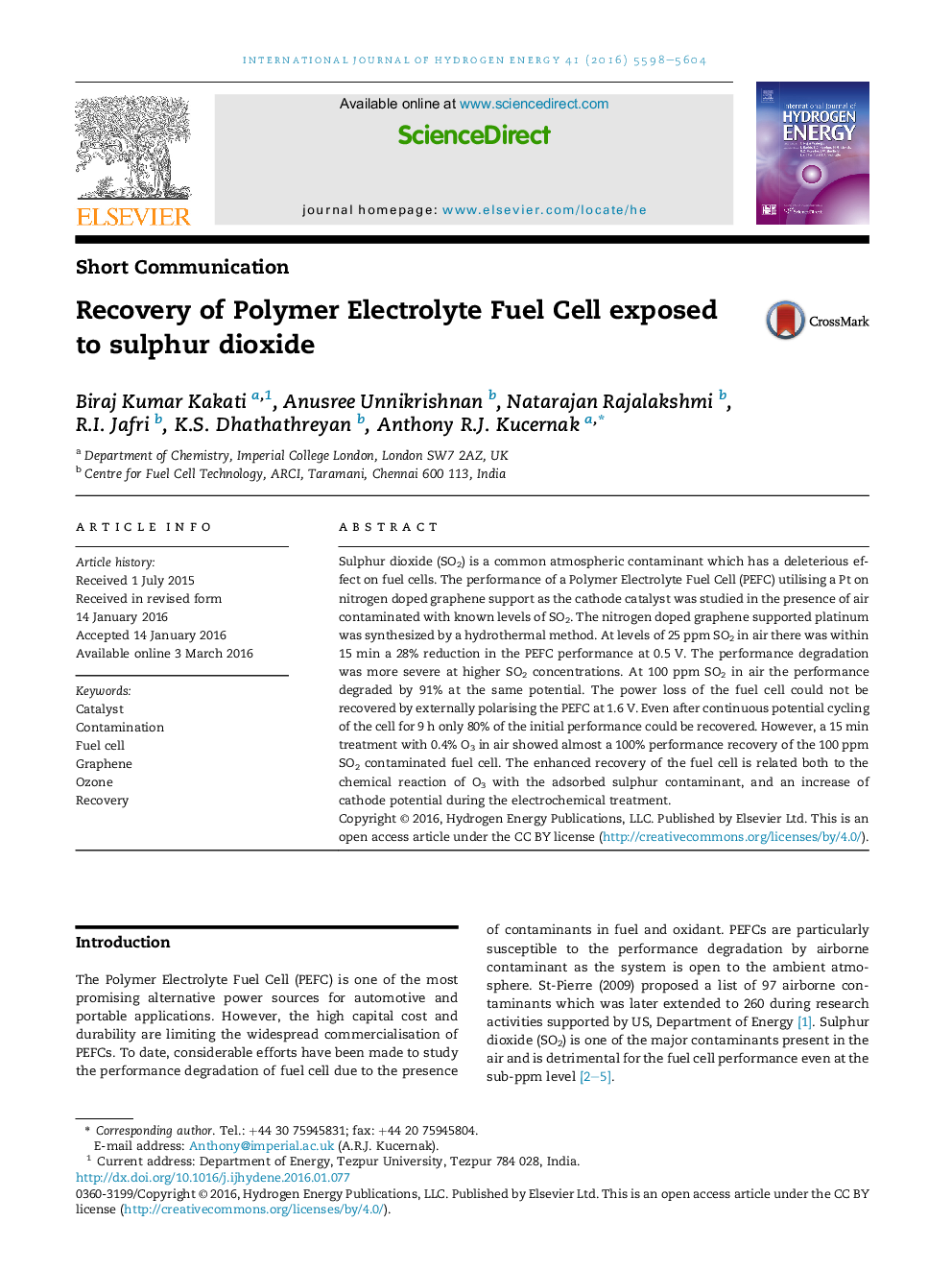| Article ID | Journal | Published Year | Pages | File Type |
|---|---|---|---|---|
| 1268800 | International Journal of Hydrogen Energy | 2016 | 7 Pages |
Sulphur dioxide (SO2) is a common atmospheric contaminant which has a deleterious effect on fuel cells. The performance of a Polymer Electrolyte Fuel Cell (PEFC) utilising a Pt on nitrogen doped graphene support as the cathode catalyst was studied in the presence of air contaminated with known levels of SO2. The nitrogen doped graphene supported platinum was synthesized by a hydrothermal method. At levels of 25 ppm SO2 in air there was within 15 min a 28% reduction in the PEFC performance at 0.5 V. The performance degradation was more severe at higher SO2 concentrations. At 100 ppm SO2 in air the performance degraded by 91% at the same potential. The power loss of the fuel cell could not be recovered by externally polarising the PEFC at 1.6 V. Even after continuous potential cycling of the cell for 9 h only 80% of the initial performance could be recovered. However, a 15 min treatment with 0.4% O3 in air showed almost a 100% performance recovery of the 100 ppm SO2 contaminated fuel cell. The enhanced recovery of the fuel cell is related both to the chemical reaction of O3 with the adsorbed sulphur contaminant, and an increase of cathode potential during the electrochemical treatment.
